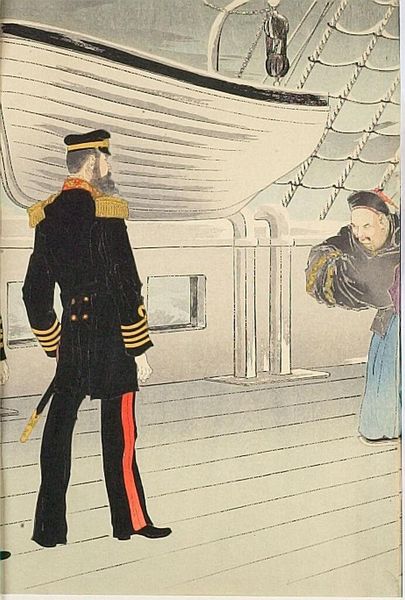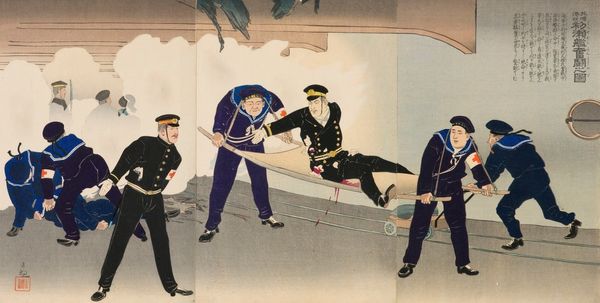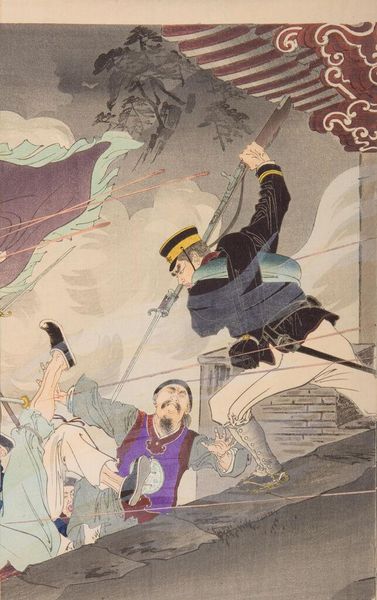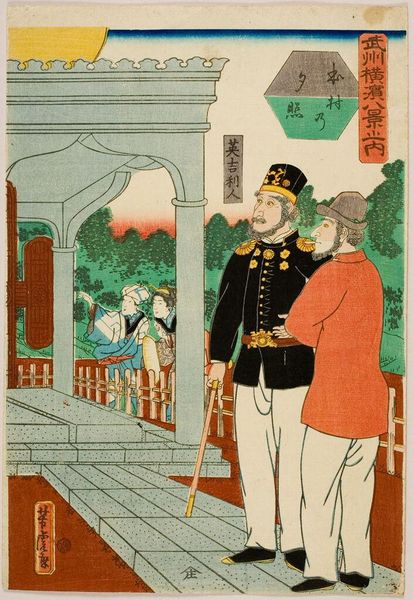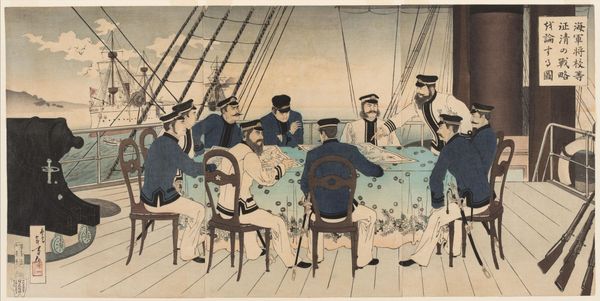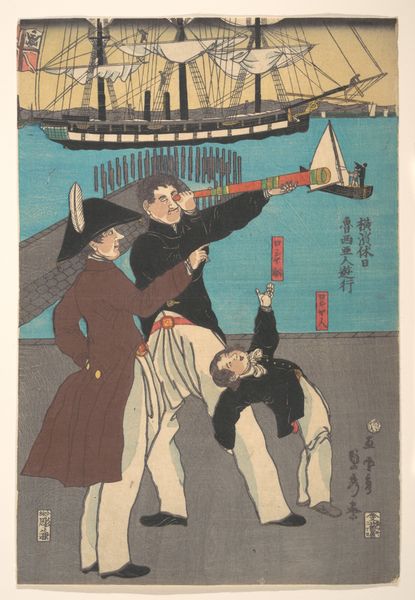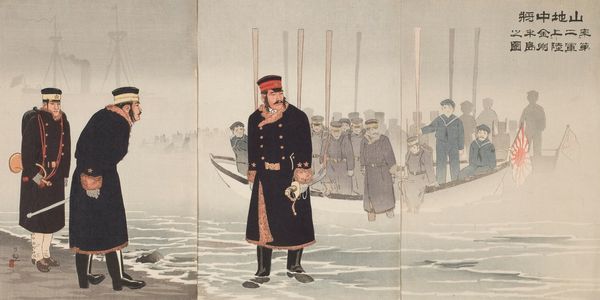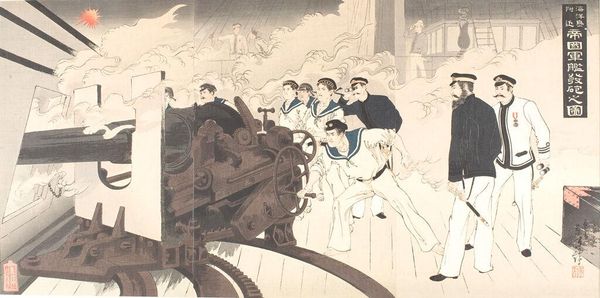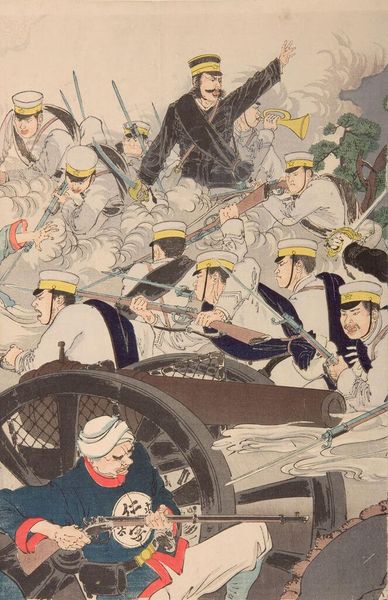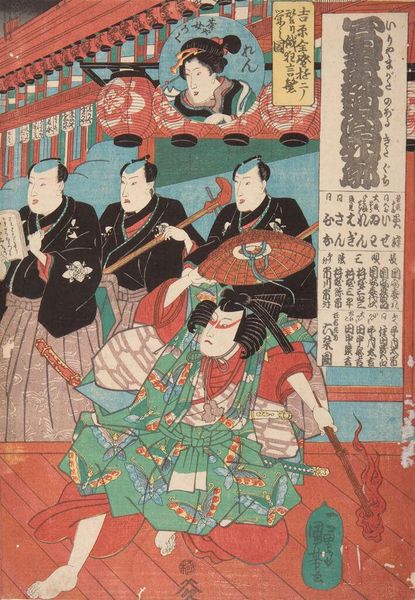
Triptych: Surrender of Admiral Ding Ruchang of the Northern (Chinese) Fleet at the Fall of Weihaiwei (Ikaiei kanraku hokuyÅkantai teitoku teijoshÅ kofukuzu) Possibly 1895
0:00
0:00
Dimensions: 37.7 x 73.5 cm (14 13/16 x 28 15/16 in.)
Copyright: CC0 1.0
Editor: Migita Toshihide’s woodblock print, *Surrender of Admiral Ding Ruchang*, depicts a pivotal moment with an almost theatrical formality. What strikes you about the symbolism in this image? Curator: Note the distinct visual language: the stiff posture of the Japanese officers versus the bowed figures of the Chinese delegation. Consider how gestures, like bowing, carry cultural weight, signifying submission and respect in a hierarchical context. What emotions do these postures evoke? Editor: I see a stark contrast – the Japanese figures are erect, exuding power, while the Chinese appear defeated. Curator: Exactly. It's a loaded image, isn't it? How does the artist use visual cues to convey national narratives and collective memory of war? Editor: It’s fascinating how a single image can encapsulate such complex historical and cultural dynamics. Curator: Indeed, art often serves as a powerful tool for shaping perceptions and perpetuating cultural memory.
Comments
No comments
Be the first to comment and join the conversation on the ultimate creative platform.
